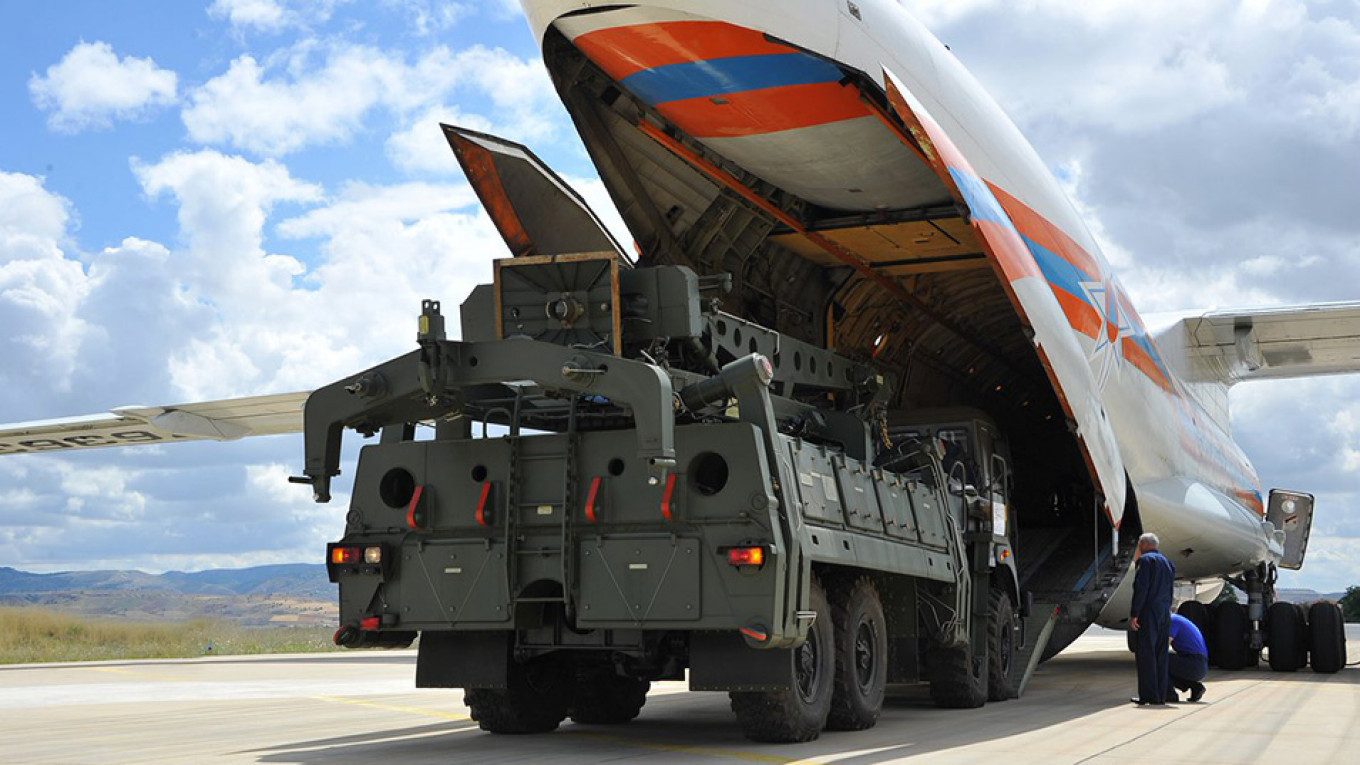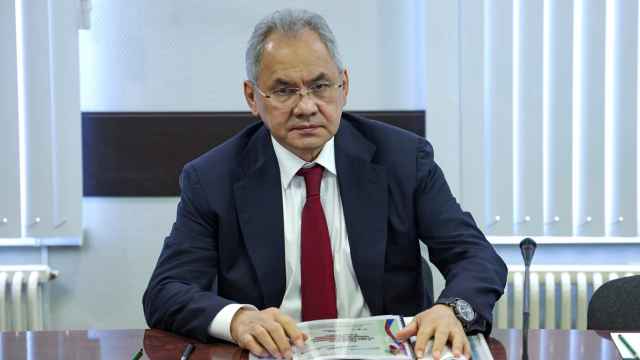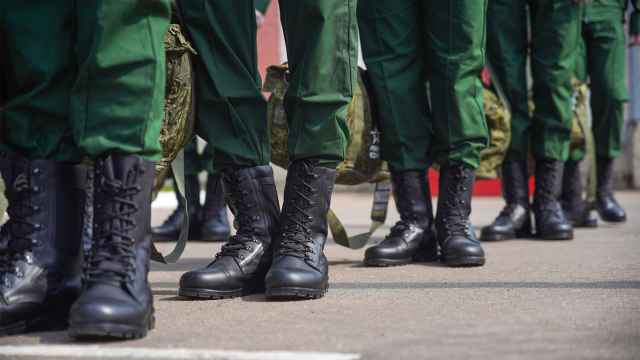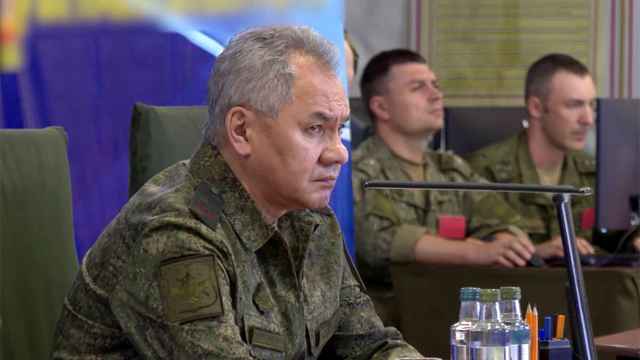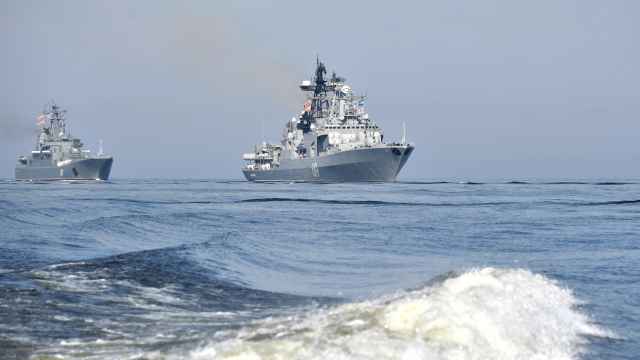Russia needs to decide whether or not to supply Tehran with air defense equipment in 2020.
The decision became problematic at the start of the year after Iran mistakenly shot down a Ukrainian passenger plane in the aftermath of the U.S. killing of top Iranian military commander Qassem Soleimani.
Marginal politicians, including nationalist leader Vladimir Zhirinovsky, have called for fast agreements in the defense supply sphere, despite the UN arms embargo, which does not formally prohibit the implementation of contracts for defensive military equipment.
Yet if we analyse reports from last year, one thing becomes clear: Moscow and Tehran have long been working on the possibility of including air defense assets in their bundle of arms contracts. This work has included, at least at the level of consultations, negotiations between both defense ministries and a joint commission on military cooperation.
After all, the UN restrictions will expire in the autumn of 2020, and Russia is not likely to vote for an extension of the embargo.
In 2016, Iran’s Defense Minister Hossein Dehghan assured his country that after Russian President Vladimir Putin’s political decision to lift restrictions on the supply of S-300PMU2 systems to Iran, Tehran would limit itself to buying four divisions from Russia. Apart from these purchases, Iran would equip its air defense forces with its own proprietary equipment designs.
Iran’s Bavar-373 anti-aircraft weapon system seems to have similar characteristics to the Russian S-300 system. And the Iranian military has said that Russian T-90 tanks are its “favourites.”
But even after the embargo is lifted, the emphasis will be on Iran’s own armoured vehicles, in particular Karrar tanks. According to rumours, the Islamic Revolutionary Guard Corps (IRGC) supports the idea of substituting imports as it controls the majority of armaments enterprises. The IRGC has been lobbying to promote its point of view through circles close to the Supreme Leader Ali Khamenei.
As is the case with the T-90 tanks, Iran’s leaders have repeatedly changed their minds about air defense equipment in their official statements. In its annual public report, the Defense Intelligence Agency of the U.S. Department of Defense noted Iran’s continuing interest in Russian T-90s, S-400 defense systems and Su-30 and Yak-130 aircraft.
The indecision is not without reason. After the the Defense Ministry’s 8th Moscow Conference on International Security in April, Bloomberg reported that due to the desire to develop relations with Saudi Arabia and Israel, Russia had declined official requests from Iran to buy S-400 systems.
At the Army-2019 forum in June, representatives of the Russian Federal Service for Military and Technical Cooperation announced Moscow’s readiness to supply Iran with an undefined number of S-400s.
All these statements and rumors do not mean anything in themselves. But they confirm that Russia and Iran have been having consultations that include discussions of air defense equipment, among other things.
After the January events, the Russian authorities and arms exporters are faced with the following question: how to behave after Iran has shot down a civilian airplane?
On the one hand, Tehran’s purchase of air defense equipment could be presented as Russia’s “contribution” to peacekeeping efforts. Russian arms would make it more complicated for the U.S. to run a military operation against Iran. If Washington continues to refrain from actions taken directly against Iran, the story would be that Russian actions and systems had repelled the threat of American strikes and incursions.
The Kremlin, however, must understand what was really behind Soleimani’s assassination: The late general helped Iran to systematically create and maintain the constant threat of global conflict in the region.
This threat was used as a bargaining chip with the West, primarily to maintain a level of hydrocarbon exports. Yet Tehran, which is used to hovering between peace and war and testing Washington’s determination, was not ready to face higher stakes.
Therefore, the Iranians did not attack the U.S. Navy ship in the Persian Gulf but its military base in Iraq. It did so having warned the Pentagon through the Swiss embassy in Tehran, as well as representatives of Iraq and Qatar.
But then Iran showed the world the low stress resistance of its air defense personnel, who destroyed a civilian airliner far from the border. The split of responsibility for air defense between the army and IRGC makes the Iranian armed forces “toxic” users of any equipment exported from the Russian Federation.
On Jan. 21, the International Civil Aviation Organisation in Iran confirmed that the Ukrainian Boeing 737 was shot down by two missiles from a Russian Tor-M1 anti-aircraft missile system. Air defense equipment provides cover for a secret IRGC facility, located near a civil airport, which is hardly accidental. Although the exporter’s responsibility for the importer’s use of arms is a controversial issue, Moscow’s image might still suffer.
Clearly, Iran’s financial resources are limited. It needs to upgrade its offensive weapons first of all. However, the case of the Ukrainian aircraft has turned the modernization of Iran’s air defense into a geopolitical issue.
Tehran may have to redirect the funds earmarked for buying strike systems toward modernizing its defense equipment. At the same time, the tense situation may allow Russia to supply Iran with air defense systems of various ranges. This would eliminate the issue of supplying offensive weapons to Iran without any consequences for other bilateral relations.
Even after the embargo is lifted, the sale of combat aircraft to Tehran, for example, may have a negative impact on Moscow’s relations with Riyadh and Abu Dhabi, not to mention possible new U.S. sanctions.
At present, Iranian air defense forces do not represent a single centralized system. Overall, neither air defense in the army nor IRGC anti-missile defenses meet modern requirements. They consist of a large number of air defense and anti-missile systems produced in Russia and the U.S.S.R, China, the USA and Britain, as well as Iran’s own designs. That makes it difficult to integrate the equipment into a single system.
Many anti-aircraft missile systems were set up by the Iranian air defense system before 1979, during the Shah’s rule. These still represent the core of the country’s air defense potential. Those were American Improved Hawk medium-range AM, as well as British Rapier and Tigercat short-range AM systems.
After the Iran-Iraq war, these facilities were supplemented with Soviet S-200 and Kvadrat complexes, Chinese HQ-2 (an analogue of the Soviet S-75) and FM-80 (export version of HQ-7). The most effective elements of Iran’s air defense are the Tor-M1 systems purchased from Russia in 2007, and the long-range S-300 AM systems obtained from Russia in 2016. Moreover, Iran’s army and IRGC already have or are preparing to deploy Iranian copies of foreign systems or their analogues.
"Dialogue on an equal footing"
The Kremlin may decide to supply S-400s as a strategic step because of the growing crisis around Iran. That would impose a “dialogue on an equal footing” on its opponents once again.
The anti-air defense systems do not only increase the capability of fire response, they also aid reconnaissance, thanks to their long-radius locators. Contracts for Buk AM systems and new batches of Tor are possible. But the most likely compromise is the export of Pantsir anti-aircraft missile systems.
These systems owe their emergence, also in the Russian army, to a contract with the UAE, which financed the experimental development work. At present, these systems are in service with many Middle Eastern countries.
According to some reports, Syria used Iranian money to pay for the implementation of the 2006 contract for the supply of these systems. Rumor has it that some systems may have entered Iran from Syria.
Moscow also needs to consider the activity undertaken by other players in the Iranian arms market, such as China. The Iranians have quite strong, and not always publicised, ties with China in the sphere of military cooperation.
China has been actively promoting its FD-2000 and LY-80 systems on the Iranian market, while the Iranian Air Force has already incorporated the Chinese automatic system of air defense forces and facilities control known as JY-10E.
Russia’s leaders will need to figure out how to maintain political ties with Tehran’s opponents, without missing the opportunity to sell products manufactured by their own defense industry.
A version of this article was originally published by Riddle.
A Message from The Moscow Times:
Dear readers,
We are facing unprecedented challenges. Russia's Prosecutor General's Office has designated The Moscow Times as an "undesirable" organization, criminalizing our work and putting our staff at risk of prosecution. This follows our earlier unjust labeling as a "foreign agent."
These actions are direct attempts to silence independent journalism in Russia. The authorities claim our work "discredits the decisions of the Russian leadership." We see things differently: we strive to provide accurate, unbiased reporting on Russia.
We, the journalists of The Moscow Times, refuse to be silenced. But to continue our work, we need your help.
Your support, no matter how small, makes a world of difference. If you can, please support us monthly starting from just $2. It's quick to set up, and every contribution makes a significant impact.
By supporting The Moscow Times, you're defending open, independent journalism in the face of repression. Thank you for standing with us.
Remind me later.


